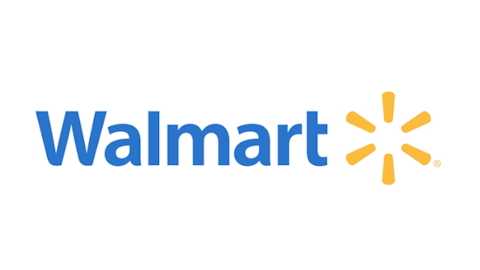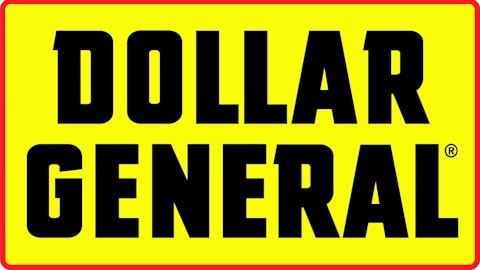Dollar Tree
Dollar Tree owns and operates discount variety stores that merchandise at low, fixed prices. This company operates stores under the names Dollar Tree, Deal$, Dollar Tree Deal$, Dollar Giant and Dollar Bills. Dollar Tree offers a wide selection of basic products and it supplements those offerings with seasonal, closeout and promotional merchandise. Dollar Tree’s merchandise mix consists of three types: Consumables (candy and food, health and beauty, plastics, paper, chemicals), Variety (toys, gifts, party goods, greeting cards), and Seasonal (Easter, Halloween, Christmas).
Dollar Tree, Inc. (NASDAQ:DLTR) also trades at a P/E ratio that is slightly less than 17, and is also up around 4% year-to-date. This company is well off its 52-week high. Dollar Tree has a net profit margin of more than 7% and a forecasted 5-year earnings growth rate that is also nearly identical to Dollar General’s forecasted rate of 17%. A 12-week target price in the $46 – $48 range suggests a yearly return of around 10% – 15%.
Family Dollar Stores
Family Dollar Stores operates general merchandise retail discount stores. Family Dollar’s products are categorized under consumables, home products, apparel and accessories, and seasonal and electronic products. Similar to Dollar General stores, Family Dollar stores are small. A Family Dollar store, for instance, is between 7,500 and 9,500 square feet. Furthermore, on average a typical store only carries approximately 6,500 – 7,000 basic stock keeping units, which reduces the complexity of operations.
Family Dollar trades at a P/E ratio of slightly less than 16 and is down around 10% year-to-date. Family Dollar has a net profit margin of around 4% and a forecasted 5-year earnings growth rate of approximately 13%. A 12-week target price in the $62 – $64 range suggests a yearly return of around 10% – 14%. Family Dollar’s next reporting date is April 10.
My Foolish take
Dollar General, Dollar Tree, and Family Dollar Stores all appear to have outstanding return on equities, strong cash flows, conservative capital structures, and fairly lofty growth expectations. Over the next few quarters, however, it will be interesting to see whether or not these companies can expand their margins and find ways to grow without sacrificing financial performance. After all, over the past few years many of these companies have grown earnings by double the average of the S&P or more. All in all, because the companies have very similar business models and valuations, it is hard to advocate one over another. That said, I feel that all of these companies are reasonably valued and that you can reasonably expect any one of them to deliver a healthy return in the 10% – 15% range.
A large concern with Big Lots, though, is that its market cap fell below $2 billion. As a consequence, it will be removed from the S&P 500 and replaced by clothing manufacturer PVH. Another concern with this company is that it has been unable to show sustainable long-term growth that could lead to higher profits. And its operating margins are weak. On the other hand, Big Lots has beaten the Street’s earnings estimates by an average of 6% over the past six quarters, its return on equity is very strong, and it has a low price to cash flow ratio of around six. Compared with the other three stocks, I expect to see more volatility with this stock over the next several months.
The article Which Stocks are Hidden Treasures? originally appeared on Fool.com and is written by Ryan Peckyno.
Copyright © 1995 – 2013 The Motley Fool, LLC. All rights reserved. The Motley Fool has a disclosure policy.




